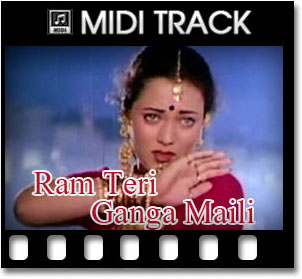

In the story’s most powerful scene, the latter denounces her (in the Mahabharata, Dushyanta knowingly lies, ostensibly to protect his reputation and lineage against the paternity suit of a possibly “loose” woman, but in the Sanskrit drama he of course literally does not remember who she is) and Shakuntala suffers bitter humiliation, yet offers a spirited and heartfelt defense of her claim. In any case, the lovesick Shakuntala becomes pregnant and gives birth to the hero’s son, and then-after enough time has elapsed to make her forest-dwelling neighbors wonder why no one has come for her-makes her own way to the royal city to present the boy to the king. Kalidasa’s king-hero is thus exonerated of guilt for abandoning the heroine (and Raj Kapoor will likewise favor the latter approach, substituting a grandmotherly heart-attack and resultant family crisis for the loss of the ring). However, in Kalidasa’s better known version (possibly produced under the patronage of the Gupta kings), both Shakuntala and her royal lover fall victim to the power of a curse that causes her to lose the signet ring he gave her as a love token, and him to suffer total amnesia regarding the affair. In fact, the Mahabharata (with its characteristically astute and dark vision of realpolitik) makes clear that the king has no such intention, and merely intends to enjoy a one-night-stand with a naïve rustic belle. The virile King Dushyanta, out for a hunt, comes upon her and convinces her, with some difficulty, to enter into an informal “marriage” with him, promising to legitimize their union and send for her after he returns to his capital. Shakuntala’s birth is itself the outcome of a brief liaison between a celestial courtesan ( apsara) and a world-renouncing king, and she is raised in a forest hermitage where (like a Walt Disney heroine) she fondles tame deer and talks to birds and flowers. Some background concerning the Shakuntala story: One of the most ubiquitous tropes of classical Sanskrit narrative is of a prince, emblematic of masculinity, urbanity, and indeed human culture, who strays into the wilderness (usually while hunting deer) and there encounters a mysterious, semi-divine woman, symbolic of the fertility and protean power of nature, with whom he falls in love and who fatefully alters the course of his life. Like her epic prototypes, this divine forest-girl meets and falls for a city-boy and contracts an informal marriage with him-and then (so to speak) it is all downhill from there. Since the heroine of this story (after an ordeal that will be summarized below) became recognized as the mother of the dynast Bharata, whose name is reflected in the official, post-Independence name for “India” ( Bhaarat, or “the descendants of Bharata”), this tale is as portentous as it is popular.Įthnic ontogeny, national geography, Hindu mythology, and the feminization and divinization of land and nature thus all converge in the film’s blue-eyed Himalayan heroine, Ganga (played by Kapoor’s ingénue discovery Mandakini, whose stage name evokes another sacred river)-who shoulders this heavy symbolic burden, above her ample cleavage, as jauntily as she does the jug of ganga-jal (Ganges water) she carries in a famous scene early in the film.

Broadly speaking, the narrative recapitulates the Shakuntala story-that first appeared in the epic Mahabharata in perhaps the 3rd or 2nd century BCE and then was reworked, some six hundred years later, by the poet Kalidasa into the most famous of all Sanskrit dramas.

The last film that director Kapoor completed before his death in 1988 became a smash hit that heartily reconfirmed, after several lukewarm releases, his cherished epithet of “the Great Showman.” It is in fact in the grand Kapoor tradition: an ingenious and epic-scale allegory that synthesizes classical and mythic narrative, soft-core political and social commentary (here condemning the corruption of politicians and capitalists and championing the nascent environmental initiatives of Prime Minister Rajiv Gandhi), and audacious display of the female anatomy. Singh Lyrics: Ravindra Jain, Hasrat Jaipuri, Ameer Qazalbash Music: Ravindra Jain Choreography: Suresh Bhatt Art direction: Suresh Sawant Cinematography: Radhu Karmakar


 0 kommentar(er)
0 kommentar(er)
